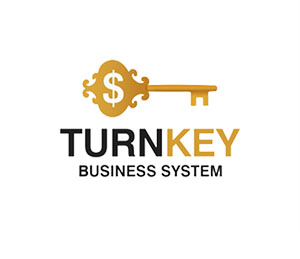The Basics of Portfolio Policy for a Passive Investor

The Basics of Portfolio Policy for a Passive Investor
In the world of investing, there are two primary approaches: active and passive.
While active investors seek to outperform the market through frequent buying and selling, passive investors aim to match market returns by holding a diversified portfolio of assets over the long term.
Passive investing has gained popularity due to its simplicity, lower costs, and proven effectiveness.
This article explores the fundamentals of portfolio policy for a passive investor, including asset allocation, diversification, rebalancing, and the role of index funds.
By understanding these principles, you can build a portfolio that aligns with your financial goals and risk tolerance.
While active investors seek to outperform the market through frequent buying and selling, passive investors aim to match market returns by holding a diversified portfolio of assets over the long term.
Passive investing has gained popularity due to its simplicity, lower costs, and proven effectiveness.
This article explores the fundamentals of portfolio policy for a passive investor, including asset allocation, diversification, rebalancing, and the role of index funds.
By understanding these principles, you can build a portfolio that aligns with your financial goals and risk tolerance.

The Basics of Portfolio Policy for a Passive Investor
What is Passive Investing?
Passive investing is a strategy that involves building a portfolio designed to mirror the performance of a market index or a specific asset class.Instead of trying to beat the market, passive investors aim to achieve market returns by holding a diversified mix of assets over the long term. This approach is based on the belief that markets are generally efficient, meaning that it is difficult to consistently outperform them through active management.
Key characteristics of passive investing include:
Long-Term Focus: Passive investors hold their investments for years or even decades, avoiding frequent trading.
Low Costs: Passive strategies typically involve lower fees compared to active management, as they require less research and trading.
Diversification: Passive portfolios are broadly diversified to reduce risk and capture the overall performance of the market.
Simplicity: Passive investing is straightforward and easy to implement, making it accessible to individual investors.
The Core Principles of Portfolio Policy for Passive Investors
To build a successful passive investment portfolio, you need to follow a few key principles. These include asset allocation, diversification, rebalancing, and the use of index funds or ETFs.1. Asset Allocation
Asset allocation is the process of dividing your portfolio among different asset classes, such as stocks, bonds, and cash. The goal is to create a mix of assets that aligns with your financial goals, risk tolerance, and time horizon.
Stocks: Equities offer higher potential returns but come with greater volatility. They are suitable for long-term growth.
Bonds: Fixed-income investments provide stability and income, making them ideal for conservative investors or those nearing retirement.
Cash: Cash and cash equivalents, such as money market funds, offer liquidity and safety but typically yield lower returns.
A common rule of thumb for asset allocation is the "100 minus age" rule, where you subtract your age from 100 to determine the percentage of your portfolio to allocate to stocks. For example, a 30-year-old might allocate 70% to stocks and 30% to bonds.
2. Diversification
Diversification is the practice of spreading your investments across different asset classes, sectors, and geographic regions to reduce risk. By holding a variety of assets, you can minimize the impact of poor performance in any single investment.
Geographic Diversification: Invest in both domestic and international markets to reduce exposure to country-specific risks.
Sector Diversification: Allocate your portfolio across different industries, such as technology, healthcare, and energy, to avoid overconcentration in one sector.
Asset Class Diversification: Combine stocks, bonds, and other assets to balance risk and return.
3. Rebalancing
Rebalancing is the process of adjusting your portfolio periodically to maintain your desired asset allocation. Over time, market fluctuations can cause your portfolio to drift from its original allocation. For example, a strong stock market performance might increase the proportion of stocks in your portfolio, exposing you to higher risk.
To rebalance, you sell overperforming assets and buy underperforming ones to restore your target allocation. This disciplined approach helps you stay on track with your investment strategy and avoid emotional decision-making.
4. Index Funds and ETFs
Index funds and exchange-traded funds (ETFs) are the cornerstones of passive investing. These funds track the performance of a specific market index, such as the S&P 500 or the FTSE 100, and offer broad diversification at a low cost.
Index Funds: These are mutual funds that replicate the composition and performance of a market index. They are typically bought and sold through a fund provider.
ETFs: ETFs are similar to index funds but trade on stock exchanges like individual stocks. They offer greater flexibility and liquidity.
Both index funds and ETFs have low expense ratios, making them cost-effective options for passive investors.
Building a Passive Investment Portfolio
Here’s a step-by-step guide to building a passive investment portfolio:Define Your Goals and Risk Tolerance: Determine your financial objectives, such as retirement, buying a home, or funding education. Assess your risk tolerance to decide on an appropriate asset allocation.
Choose Your Asset Allocation: Based on your goals and risk tolerance, decide how much to allocate to stocks, bonds, and other assets.
Select Index Funds or ETFs: Choose funds that track broad market indices and align with your asset allocation. For example, you might select an S&P 500 index fund for U.S. stocks and a global bond ETF for fixed income.
Diversify Across Markets: Include a mix of domestic and international funds to achieve geographic and sector diversification.
Rebalance Regularly: Review your portfolio annually or semi-annually and rebalance as needed to maintain your target allocation.
The Benefits of Passive Investing
Passive investing offers several advantages:
Lower Costs: Passive funds have lower expense ratios compared to actively managed funds, allowing you to keep more of your returns.
Simplicity: Passive investing is easy to understand and implement, making it suitable for beginners.
Consistency: By tracking market indices, passive funds provide consistent returns that reflect overall market performance.
Tax Efficiency: Passive strategies involve less trading, resulting in lower capital gains taxes.
Common Mistakes to Avoid
While passive investing is straightforward, there are some pitfalls to watch out for:Overcomplicating Your Portfolio: Avoid the temptation to add too many funds or asset classes. Keep your portfolio simple and focused.
Neglecting Rebalancing: Failing to rebalance can lead to unintended risk exposure. Stick to a regular rebalancing schedule.
Chasing Performance: Don’t switch funds based on short-term performance. Stay committed to your long-term strategy.
Ignoring Fees: Even small differences in fees can add up over time. Choose low-cost index funds and ETFs.
Conclusion: The Power of Passive Investing
Passive investing is a proven strategy for building long-term wealth with minimal effort and cost. By focusing on asset allocation, diversification, and low-cost index funds, you can create a portfolio that aligns with your financial goals and risk tolerance. The key to success lies in staying disciplined, avoiding emotional decisions, and maintaining a long-term perspective.Whether you’re a beginner or an experienced investor, passive investing offers a simple and effective way to achieve financial security.
Start today by defining your goals, building a diversified portfolio, and letting the power of the market work for you. Remember, the journey to financial freedom is a marathon, not a sprint—and passive investing is your steady, reliable path to the finish line.









Report
My comments